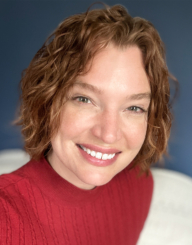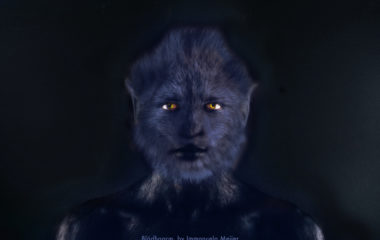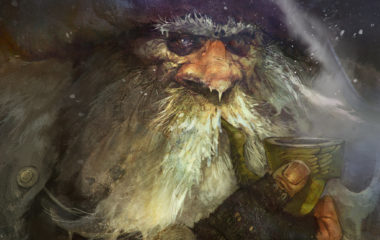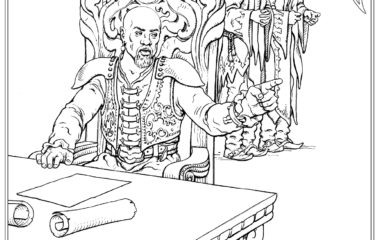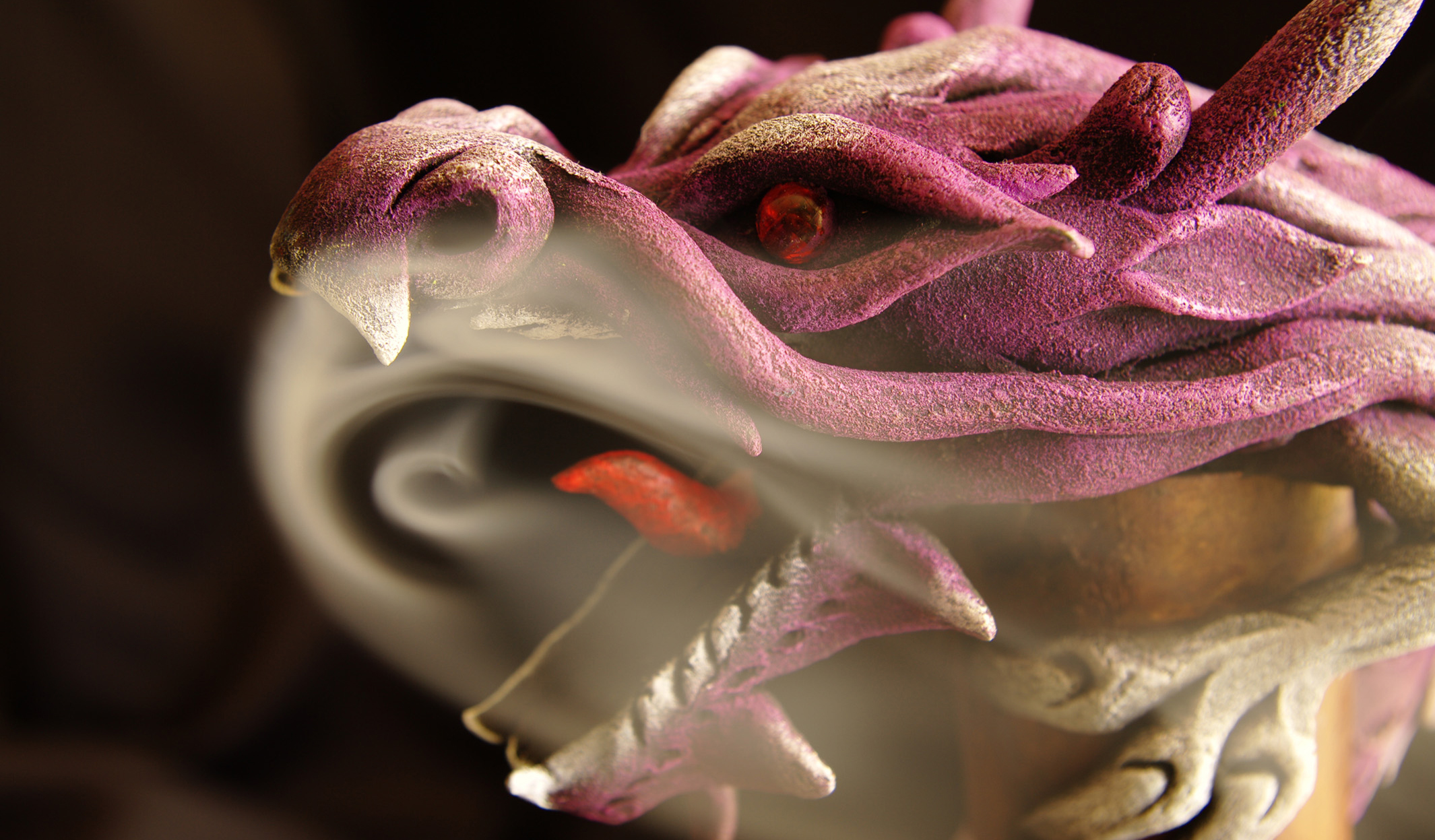
Overview
Dragons have lived in Alagaësia for as long as the continent itself has existed. Dwarven myth credits the gods Urûr and Morgothal with their creation, but regardless of whether the dragons’ origins are mythical in nature or not, they are extremely intelligent, telepathic beings prone to spontaneous acts of wild magic and intrinsically linked to the well-being of the land.
Early History
According to Heslant the Monk, before the arrival of the elves, dragons were mainly preoccupied with eating, breeding, and—until the creation of the Dragon Riders—stealing the dwarves’ sheep and gold (the dwarves still hold a grudge for this). Their primary nesting regions were in the center of the Hadarac Desert, as well as the Spine and Beor Mountains.
Dragon War
Someone unfamiliar with dragons might think that because they don’t speak, they are large carnivores capable of breathing fire, flying, mating, and causing destruction . . . but not much else. This assumption led to Du Fyrn Skulblaka, the Dragon War, a conflict between the elves and dragons that nearly destroyed both races.
It began thousands of years after the emergence of the dwarves, when the elves and Urgals independently arrived in Alagaësia from across the sea. Mistaking the skulblakya for dumb beasts, a young male elf hunted and murdered one. The dragons united, killed the perpetrator and then attacked the elven nation. Unable to find a means of communication between the races, the war raged for five years and both sides suffered heavy losses. Then the elf Eragon found an abandoned dragon egg and decided to raise the hatchling, Bid’Daum. They traveled through the land together, successfully negotiating peace between the two sides.
Dragon Riders Established – Golden Age for All
Eragon and Bid’Daum founded the Dragon Riders to ensure that there would never again be a war between their kinds. Because a signed treaty would mean little to a dragon, it was decided to link the two races with magic:
“. . . it took nine years for the elves’ wisest magicians to devise the needed spell. When they had, they and the dragons gathered together at Ilirea. The elves provided the structure of the enchantment, the dragons provided the strength, and together they melded the souls of elves and dragons. The joining changed us. We dragons gained the use of language and other trappings of civilization, while the elves shared in our longevity, since before that moment, their lives were as short as humans’. In the end, the elves were the most affected. Our magic, dragons’ magic—which permeates every fiber of our being—was transmitted to the elves and, in time, gave them their much-vaunted strength and grace.” (Glaedr, Eldest Deluxe, pages 437-438)
The Dragon Riders became peacemakers and ambassadors between all races. The next 2,600 years were a Golden Age for the Riders, elves, and dwarves (and in the latter portion, for the humans as well). Much of what we know of the skulblakya comes as a result of this partnership between Riders and dragons.
Magic
This magic—vital to the existence of dragons—is so instinctual that they do not need the ancient language to use it. Nor can they fully control its effect or accurately predict the outcome when they use it. The result is often more powerful than any one magician’s spell. Examples include the Banishing of Names, the spell that erased the memory of the Rock of Kuthian from all of Alagaësia, and the mending of the Star Sapphire.
Dragon Personality
Dragons are a wonder to see, a fact that they enjoy immensely. Appealing to a dragon’s vanity can be an excellent tactic to befriend one or assuage its irritation. Most of them are fascinated by puzzles and riddles, and are often adept at solving them.
Mating
Dragons do not partner for life. Rider bonded dragons considered it a great accomplishment to mate with wild counterparts (more danger, less decorum). Females lay one, two, or three eggs at any one time. Because they are effectively immortal, there is no upper limit to the number they can lay over their lifetimes. Overall, dragons have a low fertility rate, a natural result of their biology. This is a good thing, otherwise Alagaësia would be inundated by large, hungry predators.
Eggs
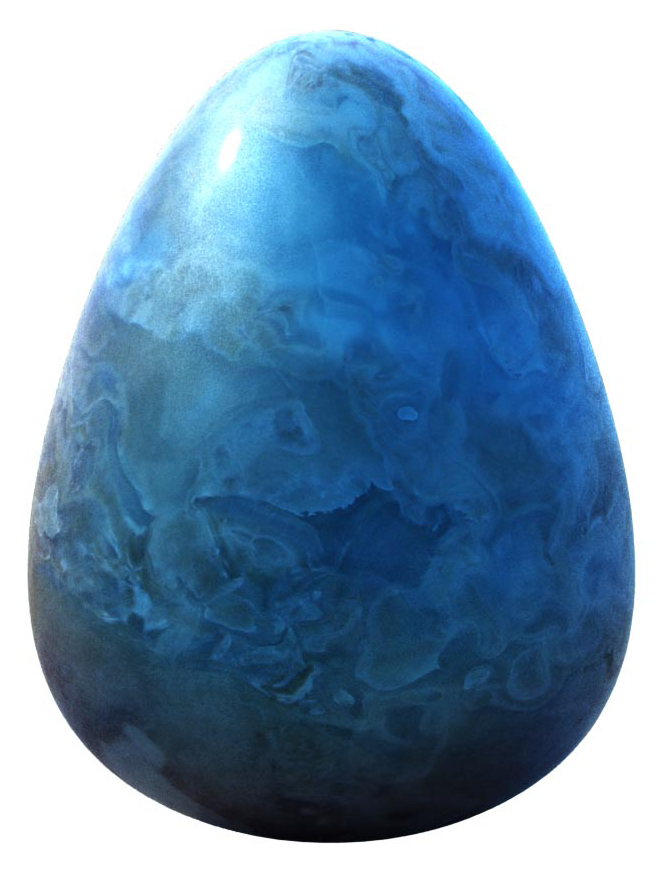
Aside from one of their inexplicable acts of magic, dragons cannot influence the sex of their offspring. The color of the shells—which resemble large semi-precious stones—is the same as the color of the dragon hibernating inside. Egg size is dependent on the maturity of the mother; some eggs are as small as a soccer ball, while others near five feet tall. (Larger hatchlings definitely have an advantage over smaller ones; however, the difference usually vanishes over the first year or two, as the smaller ones tend to grow faster.)
If a mother decides to give her egg to the Riders, a spell is cast on the baby inside to prevent it from hatching until it encounters the person it chooses to bond with. Dragons can remain in their eggs indefinitely with no harm to the fetus—however, for periods of time greater than one hundred years, a youngling’s mind can warp and twist. It’s generally best to hatch before that milestone.
Gender Identification, Scales, Sight
Though dragons are very easy to identify (sheep-eating creatures with big wings, scales, teeth, and a pernicious ability to set things on fire), their anatomy can make it difficult to tell males and females apart, though males tend to be slightly shorter with thicker musculature. It’s typically best to let the individual in question tell you, if it wants you to know.
Dragons come in all colors. Their scales are as vivid as hummingbird feathers and reflect light like polished metal. Dragons typically stay the same color their whole life, though Mimring’s scales became translucent following a high-altitude flight.
Dragons see purples as blue; reds are muted and some greens look brown. Christopher Paolini is color blind and based their sight on how he sees: the world is awash with a blue tint, and strong blues really pop out.
Youth and Adolescence
Once they are five to six months old, and mature enough to breed, dragons gain the ability to breathe fire. The older they become, the longer they can sustain a flame during one exhale. Considering that a dragon can live forever as long as it isn’t mortally wounded, and does not stop growing, that’s a lot of flame! It’s not uncommon for the wingspan of a mature adult to be one hundred feet across.
Eldunarí
Each dragon has an Eldunarí (aka heart of hearts) hidden within them. This stone-like object is made of the same material as dragon scales:
“When a dragon hatches, their Eldunarí is clear and lusterless. Usually it remains so all through a dragon’s life and dissolves along with the dragon’s corpse when they die. However, if we wish, we can transfer our consciousness into the Eldunarí. Then it will acquire the same color as our scales and begin to glow like a coal. If a dragon has done this, the Eldunarí will outlast the decay of their flesh, and a dragon’s essence may live on indefinitely. Also, a dragon can disgorge their Eldunarí while they are still alive. By this means, a dragon’s body and a dragon’s consciousness can exist separately and yet still be linked, which can be most useful in certain circumstances. But to do this exposes us to great danger, for whosoever holds our Eldunarí holds our very soul in their hands. With it, they could force us to do their bidding, no matter how vile.” (Glaedr, Brisingr Deluxe, page 628)
So it is a great honor and ultimate sign of trust when a dragon entrusts their Eldunarí to someone. (A Rider may ask their bonded dragon if it has given its heart of hearts away, but it is impolite to for someone else to inquire.)
All of that said, during the golden age of the Riders, bonded dragons often disgorged their Eldunarí for convenience: anyone holding a heart of hearts can easily communicate with its dragon and strengthen spells with the dragon’s energy. Both abilities are possible regardless of the dragon’s location.
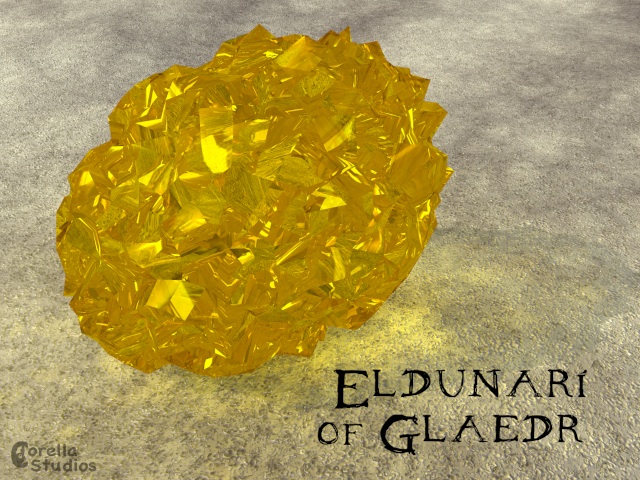
Wild elder dragons often wait until hatchlings are mature enough to understand the responsibility of safeguarding their Eldunarí before informing them of the existence of the heart of hearts. The Dragon Riders have a different tradition. Teachers typically wait until the relationship between a Rider and bonded partner has developed for several years before informing them of the Eldunarí. This is a preventative measure to lessen the risk that a young dragon disgorges his Eldunarí just to impress or appease his Rider.
A dragon must be careful not to expel his/her Eldunarí too young because the size of a heart of hearts is directly proportional to the size of its owner when expelled. If removed too early, the mind and soul inside cannot grow and mature, limited by the size of the Eldunarí itself. (For a detailed description of the process of disgorging an Eldunarí, see page 695 of a first edition Brisingr.)
Many dragons don’t disgorge their heart of hearts. Once an individual’s physical body dies, it is confined to its Eldunarí, unable to experience the world around it except through the senses of others around it, and unable to fly or move without the assistance of a living being. They cannot even end their own existence without help from either a rare, unpredictable magical impulse that breaks the Eldunarí from within or from someone smashing it. This isn’t a way many dragons want to live. But there are reasons why some do:
“As their body was failing, a dragon might panic and flee into their Eldunarí. Or if a dragon had disgorged their heart before their body died, they would have no choice but to continue to endure. But mostly, the dragons who chose to live on in their Eldunarí were those who were old beyond measure, older than Oromis and I are now, old enough that the concerns of the flesh had ceased to matter to them and they had turned in on themselves and wished to spend the rest of eternity pondering questions younger beings could not comprehend. We revered and treasured the hearts of such dragons on account of their vast wisdom and intelligence. It was common for wild dragons and paired dragons alike, as well as Riders, to seek advice from them on matters of importance.” (Glaedr, Brisingr Deluxe, page 633)
Also, sometimes bonded dragons whose bodies have died choose to live in their Eldunarí and remain their Rider’s companion, a partnership called Indlvarn.
“The transition would hardly be a pleasant one for the dragon, but many Riders and dragons successfully adapted to the change and continued to serve the Riders with distinction. If, however, it was a dragon’s Rider who died, then the dragon would often smash their Eldunarí, or arrange for another to smash it for them if their body was no more, thus killing themselves and following their Rider into the void. But not all. Some dragons were able to overcome their loss—as were some Riders, such as Brom—and continue to serve our order for many years afterward, either through their flesh or through their heart of hearts.” (Glaedr, Brisingr Deluxe, page 637)
It is possible for the connection between a dragon and its Eldunarí to be severed without instant death, although it is highly uncommon. When Kialandí fought with Oromis and Glaedr, the Forsworn cast a spell that crippled Oromis’ ability to access magic. Eragon wondered why Kialandí didn’t do the same to Glaedr. The elder dragon explained:
“He would have, but he feared it would either kill me or sever my connection with my heart of hearts and thus create two independent versions of me that they would then have to subdue. Even more than elves, dragons depend on magic for our existence; without it, we would soon die.” (Inheritance Deluxe, page 435)
No longer dependent on food or water, Umaroth explained that Eldunarí draw their energy from light, a factor considered in choosing the location for the Vault of Souls. This is contradicted by Oromis in Brisingr Deluxe, pages 635-636, where he states that the source of their energy is unknown to both Riders and dragons, but that it is a magical process:
“It may be they absorb sunlight, as do plants, or that they feed off the life forces of the creatures closest to them. Whatever the answer, it has been proven that when a dragon undergoes body death and their consciousness takes up sole residence in their heart of hearts, they bring with them however much spare strength was available within their body when it ceased to function. Thereafter, their store of energy increases at a steady pace for the next five to seven years, until they attain the full height of their power, which is immense indeed. The total amount of energy an Eldunarí can hold depends upon the size of the heart; the older a dragon, the larger their Eldunarí and the more energy it can absorb before becoming saturated.”
(Lord Barst was finally killed during the Battle of Urû’baen when Roran succeeded to shatter the Eldunarí hidden with the lord’s breastplate. The heat and light released from within the heart of hearts was enough to incinerate Barst. For a more detailed description of the Eldunarí’s destruction, see page 698 of the deluxe edition of Inheritance.)
For thousands of years, dragons kept their hearts of hearts in Du Fells Nángoröth. When the Dragon Riders established themselves on Vroengard, both wild and bound dragons began entrusting their Eldunarí to the repository in Doru Araeba. (Galbatorix seized most of these after the Battle of Doru Araeba.)
Rider Selection
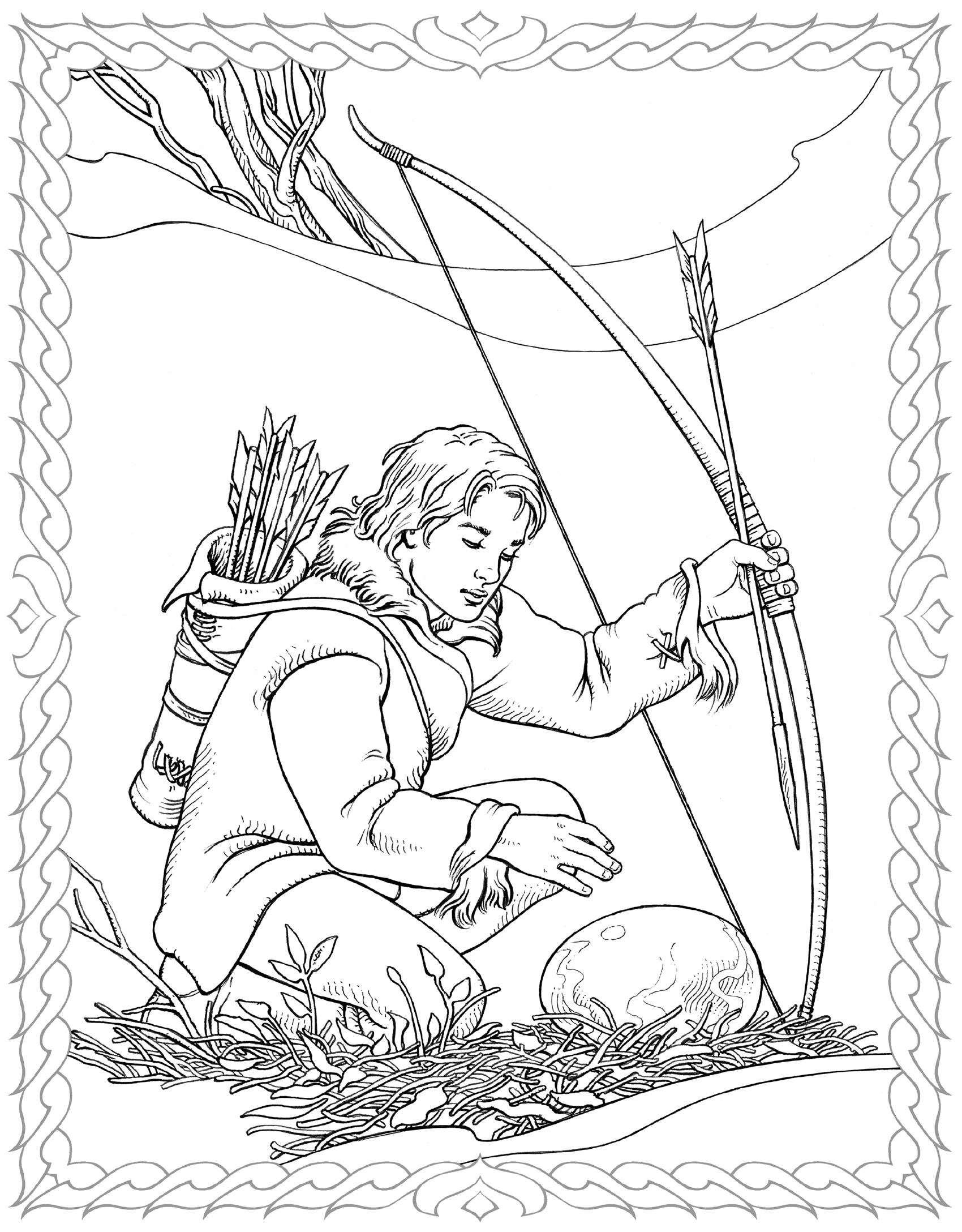
An unhatched dragon chooses its partner by examining candidates’ minds, getting a sense of who they are, and deciding if they are a good match. (This ability to sense the character of an individual fades once outside the egg.) During times of uncertainty or duress, a dragon may choose to delay hatching even after finding a Rider—to ensure there is no trickery or deceit—as Saphira did with Eragon.
Since dragons mature so quickly, they rarely hatch for someone younger than eleven or twelve, because they prefer to bond with an individual who is already somewhat mature—otherwise, the dragon ends up being more a parent to their Rider than an equal partner. Humans are typically brought before eggs at the age of ten, while elves are not matched until twenty; at the time of writing this article, Christopher has not specified what the minimum ages of dwarf and Urgal candidates are. It is possible, though extremely rare, for two dragons to be bonded with the same Rider at the same time.
If a dragon is forced to bond with another individual after already bonding with his or her true Rider, as Shruikan was by Galbatorix, it twists and perverts the victim to the core. Shruikan’s true Rider was murdered, and then the dragon became Galbatorix’s captive. Sadly, he had no chance of recovery.
Agaetí Blödhren
Every one hundred years, the elves perform the Agaetí Blödhren, a celebration and renewal of the pact between the dragons and Riders. During the festivities, Caretakers Iduna and Nëya, who guard, maintain, and embody the magical pact, dance together. Each bears a portion of a giant tattoo that eventually merges into a spectral dragon during the ritual. This specter is the reflection of the dragon race itself and is capable of spontaneous magical acts in times of need. There was very great need three times, once before the events of the Inheritance Cycle and twice after.
Humans Added to Pact
The first time the spectral dragon took action was nearly two thousand years after the Dragon Riders were founded, when the human King Palancar settled in what came to be known as Palancar Valley. He unsuccessfully attacked the elves three times, trying to increase his holdings. To stop the violence, the lords under Palancar signed a treaty with the elves behind his back, effectively deposing the king. The Riders’ leader at the time, Anurin, added the human race to the Dragon Rider pact (via the spectral dragon) in the hopes that this would help avoid future conflict between the humans and elves. This decision generated enough tension between him and the elf queen Dellanir that he eventually seceded from the elves and established the Riders on Vroengard, independent from reliance on any governmental power.
Humans began to see the benefits of joining the Dragon Riders, though the effects were less obvious when compared with the elves, since the humans were not part of the original pact and the spell had had less time to work on them. “Still it has already gentled your race from the rough barbarians who first landed in Alagaësia, though you have begun to regress since the Fall.” (Glaedr, Eldest Deluxe, pages 437-438)
Galbatorix’s Rise To Power
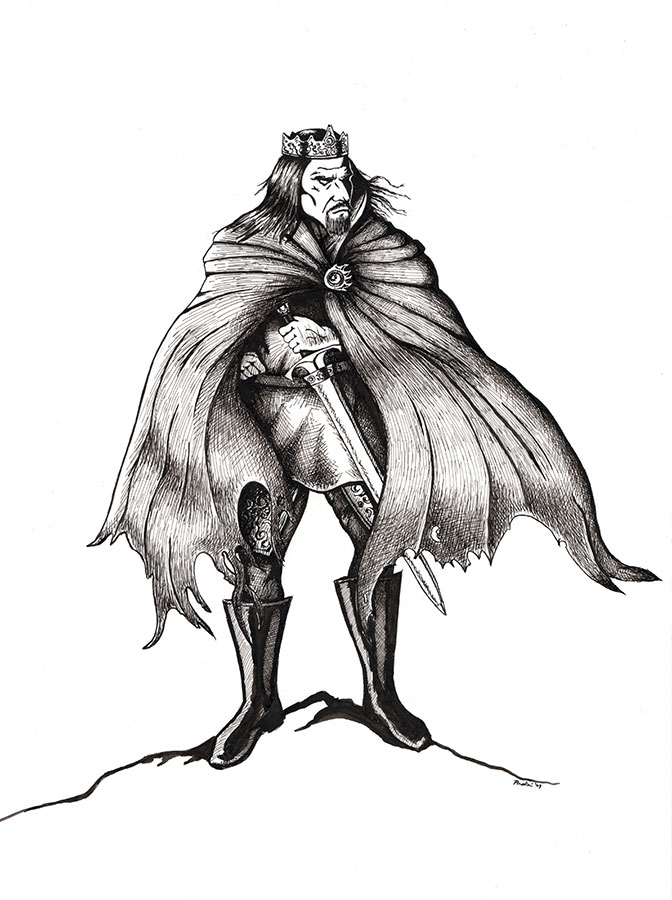
Then Galbatorix rose to corrupt power nearly seven hundred years after the humans joined the Riders. With the help of the Shade Durza, he enslaved the Eldunarí of the first Rider and dragon he killed and subsequently set about corrupting as many dragons and Riders as he could. Those he could not convince were killed until only Glaedr and Oromis, who went into hiding, remained. He systematically eradicated the wild dragons, too. The dwarves and elves were forced to withdraw as well.
Three dragon eggs—the only ones known to remain in all of Alagaësia—were in Galbatorix’s hoard, along with a vast collection of stolen Eldunarí that he bent to his will over the next forty years. It seemed that the dragons of Alagaësia were no more and with their disappearance, the linked races began to decline as well. Furthermore, Christopher Paolini has stated that because of the dragons’ intrinsic magical connection to Alagaësia, the land itself was in decline.
But things were not as bleak as they seemed. Prior to the Battle of Doru Araeba—and in great secrecy—a few Riders created the Vault of Souls, a hiding place for 243 eggs (twenty-six of which could bond with a partner) and 136 free Eldunarí. Many protections were put in place, including a spell to erase the memory of the vault, its contents, and the Rock of Kuthian from anyone in the land. The Eldunarí were placed in a trance just before the Battle of Doru Araeba, set to wake immediately if the Dragon Riders won or several months later if Galbatorix was victorious. He won . . . but never discovered the Vault.
Vault Eldunarí Manipulation
In the one hundred years following the king’s victory, the vault Eldunarí remotely observed the energies all across Alagaësia and read unprotected minds to keep abreast of ongoing events. They covertly:
- Aided at least three successful assassination plots against the Forsworn.
- Facilitated the theft of Saphira’s egg from Galbatorix’s hoard.
- Caused the egg to appear in front of Eragon instead of Brom. (The Eldunarí had determined that the boy might be a good fit for Saphira; she agreed.)
- Implanted the werecats (long-standing friends of the dragons) with hints to the whereabouts of the Rock of Kuthian, along with clues to the location of brightsteel (for another Rider sword)—information eventually entrusted to Eragon via Solembum. All memory of the source of this knowledge was wiped from the werecats’ minds.
- Gave Eragon dreams of Arya so he would eventually rescue her from Durza.
- Inspired the spectral dragon to heal Eragon’s back and accelerate his physical transformation (something that normally takes many years to occur) during the Agaetí Blödhren celebration. This was the second occasion the spectral dragon came through in a time of great need.
Events of the Inheritance Cycle
With the advent of Eragon and Saphira’s partnership, it was time to confront Galbatorix and Shruikan. Eragon and Saphira, along with their mentors Glaedr and Oromis, were the last free Riders in Alagaësia. They joined forces with the Varden, elves, and dwarves in a full assault on the Empire. (The second of the king’s three eggs, Thorn, had hatched for Murtagh, but both were forced into Galbatorix’s service.)
The Varden eventually conquered their way to Urû’baen; all that remained was the final conflict. But though Eragon had found the brightsteel to make his Rider sword, Brisingr, he still didn’t know where the Vault of Souls was. And he still had no real hope of defeating Galbatorix—something more was needed.
After another round of deciphering clues with the werecat Solembum (and, covertly, the vault Eldunarí), Eragon, Saphira, and Glaedr finally knew where to look for the Vault of Souls, though they had no idea what it might contain. The three adventurers made their way to Vroengard and finally met Umaroth and the other Eldunarí who had been guiding their actions for some time.
Most the Eldunarí in the Vault of Souls had been disgorged when the dragons were either very young or very old. Unfortunately, this would work against them when facing the king who had stolen so many Eldunarí in their prime. But their help would at least give Eragon a fighting chance against Galbatorix. All but five Eldunarí (six including Cuaroc) secretly accompanied Eragon, Saphira, and Glaedr back to Urû’baen. The eggs and handful of Eldunarí would remain behind, magically erased from memory and dormant until either the king was dead or it was safe to emerge.
During the flight back to the Varden, the Eldunarí shared many memories and important concepts with Saphira, Eragon, and Glaedr. One of these concepts (the dreams and experiences of seemingly inconsequential creatures could take on the utmost importance) would later inspire the spell that Eragon cast to defeat the king.
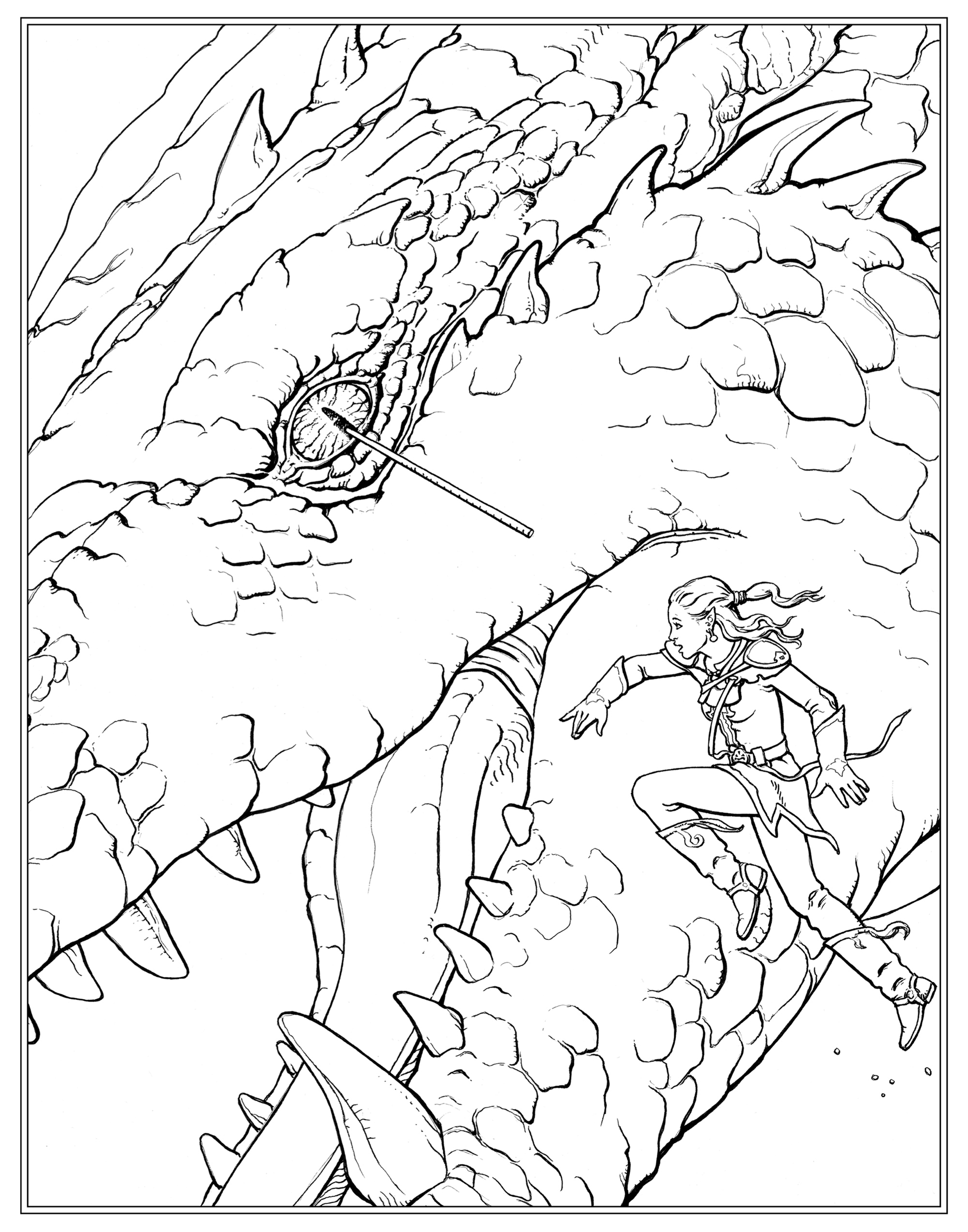
The final confrontation with Galbatorix was a success. Thorn and Murtagh broke free of their oaths to the king, and Arya killed Shruikan. Eragon spontaneously cast a wordless spell, the scope of which was widened and deepened by the free Eldunarí: the magic forced Galbatorix to truly understand the effects of his actions, from his birth onwards, on all beings in Alagaësia. The king was overwhelmed by the pain of thousands of individuals and committed suicide by converting the matter in his body into energy, thereby causing a nuclear explosion. Eragon and the free Eldunarí cast another wordless spell, this time to protect all members of their party from the blast and radiation.
The fortunes of the dragon race immediately changed with the death of Galbatorix. The captive Eldunarí were retrieved (and sent to a safe location for rehabilitation), along with many Dragon Rider weapons, magical artifacts, and precious knowledge. The third and final egg, Fírnen—now free of the king’s grasp—hatched for Arya. He and Saphira mated, perhaps hoping to begin the process of rebuilding their race.
Eragon requested that the dwarves and Urgals be added to the Dragon Rider pact. The spectral dragon agreed (its third boon), thereby equalizing the balance of power throughout Alagaësia and inexorably linking each of the four Rider races to the fortunes of its fellows and the land itself. As before, if one were to decline, so would all the rest. Additionally, Eragon proposed games, open to all races, specifically to provide Urgals with a way to prove their valor against opponents without engaging in war.
Eragon and Saphira decided to leave Alagaësia to establish the Dragon Riders in the unknown lands to the east, away from powers vying for influence. Many of the Eldunarí accompanied Eragon and Saphira, though three remained behind to counsel Arya, Fírnen, and potential new Riders. Murtagh and Thorn wandered the wilds of Alagaësia to spend some time away from others, healing from their experiences. The eggs and their protectors were retrieved from Vroengard, and two eggs were entrusted to the dwarves and Urgals, one to each race:
“. . . hopefully the dragons within would see fit to choose Riders from their designated race. If not, then they would exchange places, and if they still did not find Riders for themselves . . . well, Eragon was not quite sure what to do then, but he was confident Arya would think of something. Once the eggs hatched, they and their Riders would answer to Arya, Fírnen, and the three Eldunarí until they were old enough to join Eragon, Saphira, and the rest of their kin in the east.” (Narrative, Inheritance Deluxe, pages 848-849)
Some months after the events of the Inheritance Cycle, the new Dragon Rider stronghold along the Edda River was nearly complete. The dwarves’ and Urgals’ eggs had not hatched yet.
Which brings us, dear reader, to the present. While there are no guarantees in life, real or fictional, it is perhaps finally possible to say the future of the dragon race is safe . . . for now.
Main and Notable Secondary Dragon Characters:
- Cuaroc
- Fírnen
- Glaedr
- Saphira
- Thorn
- Shruikan
- Umaroth
- Valdr
Dragon Places:
- Craigs of Tel’naeír
- Doru Araeba
- Du Fells Nángoröth (aka Blasted Mountains)
- Stone of Broken Eggs
- Vault of Souls
- Vroengard
- Doru Araeba
- Svellhjall
Dragon Things:
- Dragon Knucklebones (Angela the herbalist)
- Eldunarí (aka heart of hearts)
Descriptions:
Dragon eggs:
“Nature had never polished a stone as smooth as this one. Its flawless surface was dark blue, except for thin veins of white that spiderwebbed across it. The stone was cool and frictionless under his fingers, like hardened silk. Oval and about a foot long, it weighed several pounds, though it felt lighter than it should have.” (Narrative, Eragon Deluxe, pages 6-7)
“A sense of wonder and reverence gripped Eragon as he approached the eggs. He leaned against the lower tier and released a shuddering breath while he stared at a gold and red egg that was almost five feet tall. Struck by a sudden urge, he peeled off a glove and placed the palm of his bare hand against the egg. It was warm to the touch, and when he extended his mind along with his hand, he could feel the slumbering consciousness of the unhatched dragon within.” (Narrative, Inheritance Deluxe, page 558)
Dragon physiology:
“The dragon was no longer than his forearm, yet it was dignified and noble. Its scales were deep sapphire blue, the same color as the stone. But not a stone, he realized, an egg. The dragon fanned its wings; they were what had made it appear so contorted. The wings were several times longer than its body and ribbed with thin fingers of bone that extended from the wing’s front edge, forming a line of widely spaced talons. The dragon’s head was roughly triangular. Two diminutive white fangs curved down out of its upper jaw. They looked very sharp. Its claws were also white, like polished ivory, and slightly serrated on the inside curve. A line of small spikes ran down the creature’s spine from the base of its head to the tip of its tail. A hollow where its neck and shoulders joined created a larger-than-normal gap between the spikes.
Eragon shifted slightly, and the dragon’s head snapped around. Hard, ice-blue eyes fixed on him.” (Narrative, Eragon Deluxe, page 38)
“When dawn came, the dragon was sitting atop his bedpost, like an ancient sentinel welcoming the new day. Eragon marveled at its color. He had never seen such a clear, hard blue. Its scales were like hundreds of small gemstones. He noticed that the white oval on his palm, where he had touched the dragon, had a silvery sheen. He hoped he could hide it by keeping his hands dirty.” (Narrative, Eragon Deluxe, page 41)
Eldunarí:
“The Eldunarí itself was like a giant gold jewel. Its surface was warm and covered with hundreds of sharp facets, which varied somewhat in size and sometimes projected at odd, slanting angles. The center of the Eldunarí glowed with a dull radiance, similar to that of a shuttered lantern, and the diffuse light throbbed with a slow, steady beat. Upon first inspection, the light appeared uniform, but the longer Eragon gazed at it, the more details he saw within it: small eddies and currents that coiled and twisted in seemingly random directions, darker motes that barely moved at all, and flurries of bright flashes no larger than the head of a pin that would flare for a moment, then fade back into the underlying field of light. It was alive.” (Narrative, Brisingr Deluxe, pages 695-696)
“Rather, dozens upon dozens of alcoves dotted the wall, and within each alcove rested a glittering orb. Some were large, some were small, but they all pulsed with a soft inner glow, like coals smoldering in a dying campfire.” (Narrative, Inheritance Deluxe, page 555)
Like this article? Check out the rest of the Encyclopedia Alagaësia series!

